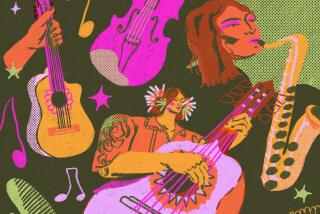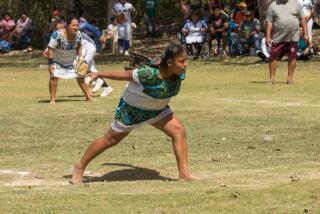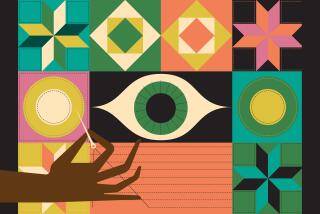Rich Sources of Weaving in Oaxaca
OAXACA, Mexico — The real fun of shopping in Mexico is the discovery of handcrafts at their source. This is where unusual items in a broad range are found.
Oaxaca is the destination of choice for a rich array of traditional handcrafts, including green and black pottery, bright-colored baskets and daggers with handsome carved handles. But hand-woven rugs and huipiles (light poncho-like garments) are the most famous local specialty.
About 340 miles southeast of Mexico City, the city of Oaxaca (capital of the state of Oaxaca) is easily reached by daily flights on Mexicana or Aeromexico Airlines.
The picturesque city is a bit sleepy and slightly dusty, but it offers a wonderful glimpse of old Mexico.
It is here that weaving is a longstanding tradition probably initiated by the Zapotec and Mixtec Indians, who are known both for building magnificent temples (the ruins are among Oaxaca’s important tourist attractions) and for extraordinary weaving and embroidering.
Oaxaca’s population is still primarily Indian, and descendants of the ancient civilizations have maintained their traditional lifestyle and art.
In the city’s squares and parks, women sit at looms rhythmically sending shuttles back and forth to weave beautiful rugs and huipiles .
Colorful, intricately designed plumed birds, fanciful flowers and geometric shapes are set against a field of white cotton on the huipiles , which are usually made from fabric panels stitched together with broad bands of brightly colored yarn.
Traditionally, the colors were made from local plants, including pomegranates, cactus fruit, alfalfa, pecan bark and other natural sources, but during the 1950s synthetic dyes were introduced. Both are now in use. Huipiles and rugs made with natural dyes are more expensive.
The patterns are made of bright red, blue, yellow, green and a magenta dye that is produced in the traditional way--by combining dried and crushed larvae of cochineal mites that feed on cacti.
The rugs of Oaxaca are made in all sizes, some from traditional patterns created by the Zapotec Indians centuries ago. Among them are the flecha , or arrow pattern, and the zigzag pattern called relampago or lightening. Many rugs are designed around a central floral shape called the sol Zapoteca (Zapotec sun) or flor de Oaxaca (flower of Oaxaca).
Traditional color themes are earth tones or shades of gray splashed with color, but the palette has been adjusted to meet the tastes of tourists. The range now includes primary colors as well as subtle pastels.
Newer patterns utilize abstract or geometrical shapes and stylized renditions of mask-like faces, birds or flowers. And recently, some weavers have begun to emulate Navaho designs in desert tones typical of rugs made in New Mexico. Yet the Oaxaca rugs are half the price.
Many of Oaxaca’s best weavers come from the town of Teotitlan del Valle, about 15 miles southeast of Oaxaca, just off Highway No. 190. In town, artisans sell their wares from their homes and in dozens of tiny shops. If you peek into almost any small courtyard in town, you’re likely to see artisans spinning, dying and weaving.
It is not necessary to travel to Teotitlan del Valle to buy a rug. In the city of Oaxaca, the selling of rugs and huipiles is everywhere, usually supervised by men. Wares are displayed on ropes that are strung up between tree trunks, or men carry their wares strapped to their backs. These walking, bargaining boutiques usually offer about 10% off market prices.
Juarez Market (one block from the town square) is a good place to get an overview of local crafts. Hundreds of stalls overflowing with colorful items such as textiles and clothes and aromatic displays of fruit, vegetables, spices and herbs are inexpensive, the price determined primarily by bargaining skills.
Rugs are available in several shapes, ranging from small or large rectangles and narrow runners to squares, and are priced by size. Prices for 30-by-72-inch rectangles are usually $40 to $60. Larger rugs sell for $90 and up.
Before buying, try to establish that the rug is pure wool. One way to find out is to pull a bit of fiber from the rug’s fringed edge and set a match to it. Acrylic blends tend to melt rather than burn.
Huipiles usually sell for about $30 to $40, regardless of size.
For fixed prices, shop at Fonart, a government-run handicraft outlet at the corner of Garcia Virgil and Bravo. Prices are somewhat higher, but quality is good and there is an ample selection of items.
Prices quoted in this article reflect currency exchange rates at the time of writing.
More to Read
Sign up for Essential California
The most important California stories and recommendations in your inbox every morning.
You may occasionally receive promotional content from the Los Angeles Times.










